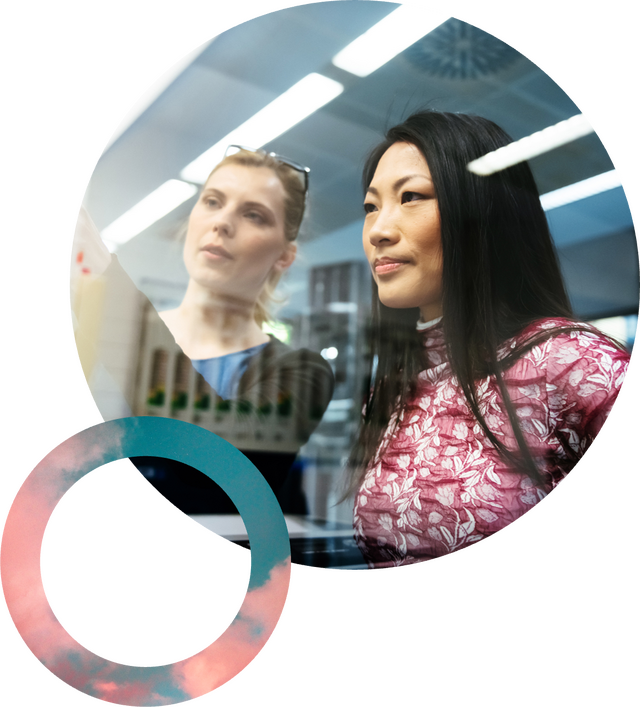Boyden Executive Survey
Strengthening the human-centric core of Industry 5.0
How can organisations thrive in a complex world of risk?

The innovators strike back
The fieldwork for our study was carried out after the invasion of Ukraine and just before its global repercussions became evident. Remarkably, amidst the chaos of war, we continue to witness in business the unfolding story of human ingenuity, with growth and value creation more purely dependent on people than ever.
While confidence in organisational growth potential has dropped from 2021, it remains robust at 70%, compared with confidence in having the right talent to align with strategy, which has increased to 59%.
Our respondents identify innovation, human capital and digital transformation as the top three drivers of growth. Less so geographic expansion, M&A, infrastructure, capital expenditure and consumer needs. It’s about innovation, it’s about human ingenuity.
Talent priorities for investment include developing high potentials, recruiting new leaders and redeploying existing talent. In recruitment, executives with digital, technology and marketing & sales capabilities – in short, innovators – top the list.
Rising business costs are the top internal risk, followed closely by employee burnout. There seems to be little sign of easing. The top external risks are inflation, global economic volatility and supply chain disruption. Supply chain issues are a major theme in our findings: For consumer & retail and industrial organisations, supply chain resilience is the top internal risk.
Where will growth come from in this tough environment? Innovation, human capital and digital transformation. Industry 5.01 has come of age and is increasingly shaping our world. Findings show that structural change is being driven by industry transformation, competing for the right talent, and digital advances.
With talent front and centre, organisations will continue to invest in leadership development for high potentials, recruiting new leadership talent, and redeploying or retraining existing people. Ensuring team diversity is also a priority, with nearly half of respondents expecting to make this investment.
While global and national economic volatility are major business concerns, financial resources are a major concern for employees. Organisations are competing for talent through bonuses, performance-related pay, hybrid working and leadership development. Other, more creative approaches are being used to attract top talent, but monetary incentives are driving recruitment and retention.
With the executive talent focus firmly on digital, tech and marketing & sales, boards are focusing on strengthening expertise in innovation/business transformation, the top driver of structural change.
For human ingenuity to flourish, ESG-DEI must take top priority at board level. It does. And for business to thrive, ESG-sustainability must be a top priority. It is. The challenge is to recruit directors with the right cognitive abilities, skill sets and technical understanding, as well as purpose and vision. Only 62% of respondents are very confident or confident in having the right talent on the board; and yet only 40% are likely to conduct a board assessment.

How is organisational culture faring? The top drivers of cultural shifts are jointly customer/client needs and organisational agility, followed, again jointly, by leadership visibility and innovation. Findings on environment, social and governance goals are encouraging as ESG and its social component, DEI, gradually shift organisational culture. For 50% of respondents ESG is ‘primarily part of most business discussions’ or ‘deeply embedded in organisational culture’. For 52%, DEI is ‘primarily part of most business discussions’ or ‘deeply embedded in organisational culture’.
What does this mean for leadership? Our respondents rank the top three most valuable soft skills as inspiring teams, driving change, and empathy. Executives need connection and leadership visibility. They need their leaders to engage both their hard and soft skills in driving change, and be empathetic as teams cope with a rapidly changing, complex and hugely demanding work environment.
Will things improve over the next 12 months? Yet again, this depends on people. Recruitment and retention challenges are much higher this year at 68% and 63%, compared with 49% and 50% in 2021. There will be a marked increase in hiring to 50% from 36% and use of interim solutions, at 40% up from 28%.
While many displayed resilience during COVID-19, employee burnout is cited as the second most pressing internal risk, after rising business costs. The need to mitigate the risk of burnout offers further evidence of the need to prioritize people. We are seeing what human ingenuity
can accomplish. But it needs to be understood and nurtured. And a people-centric approach, once adopted, needs to have staying power.
[1] Industry 5.0 is a model of the next level of industrialization characterised by the return of manpower to factories, distributed production, intelligent supply chains and hyper customisation, all aimed to deliver a tailored customer experience time after time. Source: Frost & Sullivan.




